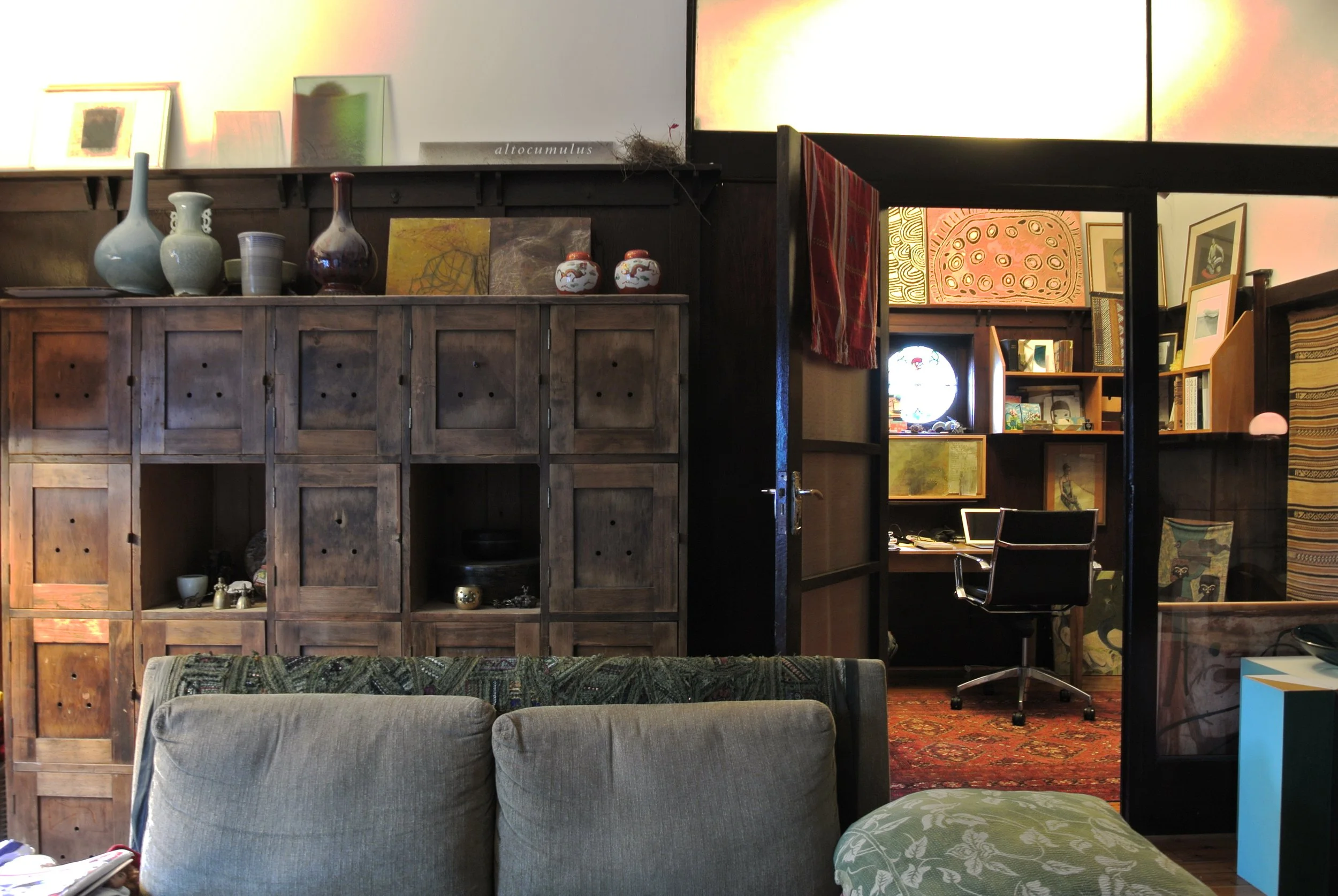Wainscoting
The word `room' means space - specifically, `cleared' space; space made available by being contained and held - as in Old English rum, German Raum: a span of space or time; and Dutch ruim: the hold of a ship, cabin; or cove as sheltered anchorage, as a place to remain (for a time). These senses derive from the etymons reue, to open, and rheu, to flow, move, convey, weigh. The room: a confluence of space, time and travel; a fluxion of opportunity; a place of expanded horizons, open and safeguarded - room to spread out, to take up space; room to take one's time; room to breathe.
* * *
I don't know who designed this room. It is one of the rooms we live in (provisionally, as we are only passing through). The room is filled with objects. Each one gathers and conveys memories, traces, lineage; each recalls acquaintances, moments, places: an archive, a cabinet of curiosities I can occupy, to which I can repair. My daughter secretes herself in there sometimes, to dance (unobserved). I fade into its cool darkness, on hot days. There is a high wainscot all around - recessed paneling; deep skirting; paired brackets; capping and capitals. Stained oak. The room makes it possible to house these things, to give them place, to produce neighborhoods and collections. The word `wainscotting' is from Low German wagenschot; the practice was adapted into architecture from coachwork. Here is the vehicle again, and the journey: carriage, ship, wagon. Wainscoting: a devalued thing, sadly; as is the room more generally.
* * *
Now the focus shifts from form to furniture, from prospect to introspection, from container to contained. The room becomes an apparatus for equipping life; for provisioning and enabling reverie.

